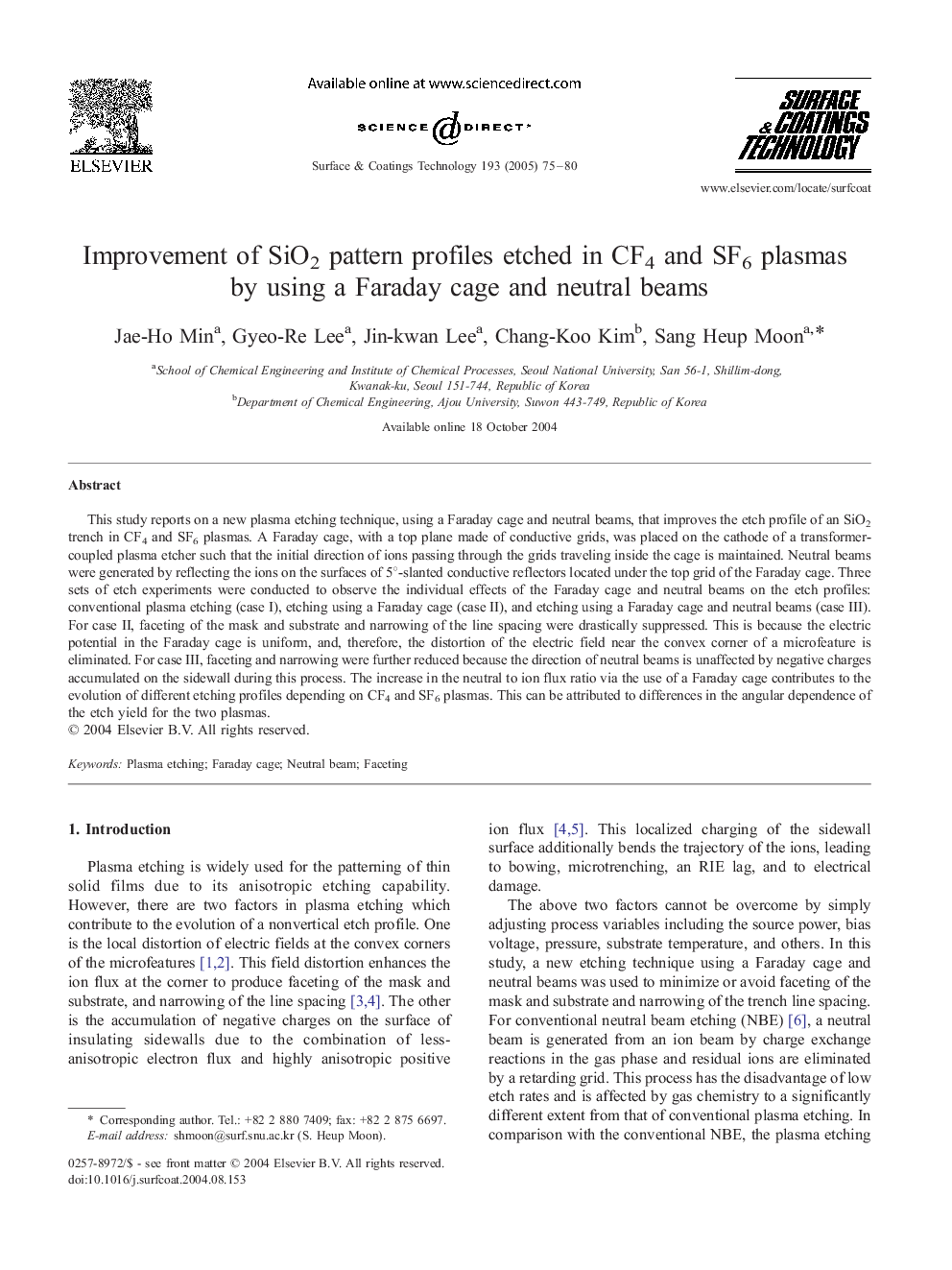| Article ID | Journal | Published Year | Pages | File Type |
|---|---|---|---|---|
| 9809812 | Surface and Coatings Technology | 2005 | 6 Pages |
Abstract
This study reports on a new plasma etching technique, using a Faraday cage and neutral beams, that improves the etch profile of an SiO2 trench in CF4 and SF6 plasmas. A Faraday cage, with a top plane made of conductive grids, was placed on the cathode of a transformer-coupled plasma etcher such that the initial direction of ions passing through the grids traveling inside the cage is maintained. Neutral beams were generated by reflecting the ions on the surfaces of 5°-slanted conductive reflectors located under the top grid of the Faraday cage. Three sets of etch experiments were conducted to observe the individual effects of the Faraday cage and neutral beams on the etch profiles: conventional plasma etching (case I), etching using a Faraday cage (case II), and etching using a Faraday cage and neutral beams (case III). For case II, faceting of the mask and substrate and narrowing of the line spacing were drastically suppressed. This is because the electric potential in the Faraday cage is uniform, and, therefore, the distortion of the electric field near the convex corner of a microfeature is eliminated. For case III, faceting and narrowing were further reduced because the direction of neutral beams is unaffected by negative charges accumulated on the sidewall during this process. The increase in the neutral to ion flux ratio via the use of a Faraday cage contributes to the evolution of different etching profiles depending on CF4 and SF6 plasmas. This can be attributed to differences in the angular dependence of the etch yield for the two plasmas.
Related Topics
Physical Sciences and Engineering
Materials Science
Nanotechnology
Authors
Jae-Ho Min, Gyeo-Re Lee, Jin-kwan Lee, Chang-Koo Kim, Sang Heup Moon,
